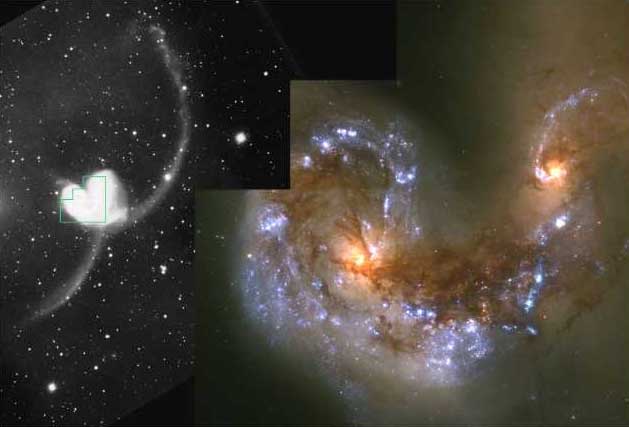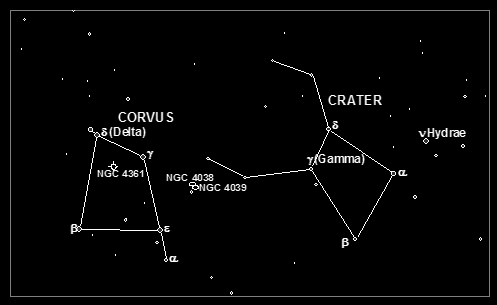Corvus and Crater
The four brightest stars of Corvus are all of the third magnitude and form a quadrilateral lying to the south of Virgo and perched on the tail of Hydra.
The rather southerly declination of Corvus means that opportunities to observe it from the UK tend to be restricted. It does however possess a number of objects worth seeking out. The most noteworthy of these is undoubtedly the famous pair of interacting galaxies, NGC 4038 and 4039, known as the “Antennae” or “Rat-Tailed” galaxy. Despite being only 11th magnitude this is one of the brightest pairs of connected galaxies. Another galaxy (NGC 4027) in the same low power field is also thought to be physically associated with the pair. As well as the Antennae, Corvus also possesses the 10.5 magnitude planetary nebula NGC 4361 and a very attractive double star, Delta Corvi which comprises a white third magnitude primary and an orange eighth magnitude secondary at an easy separation of 24 arcseconds.

Colliding galaxies NGC 4038 and 4039 (HST photo)
The constellation of Crater lies to the west of Corvus and is rather undistinguished, having no stars brighter than the fourth magnitude and no galaxies or other deep sky objects brighter than the eleventh. Surprisingly though it is, like Corvus one of the original 48 constellations in Ptolemy’s “Almagest”. Gamma Craterii is a nice telescopic double, with fourth and ninth magnitude components separated by 5 arcseconds.

